How to Fix “Won’t Roll Up” Projector Screens, With Demo Images
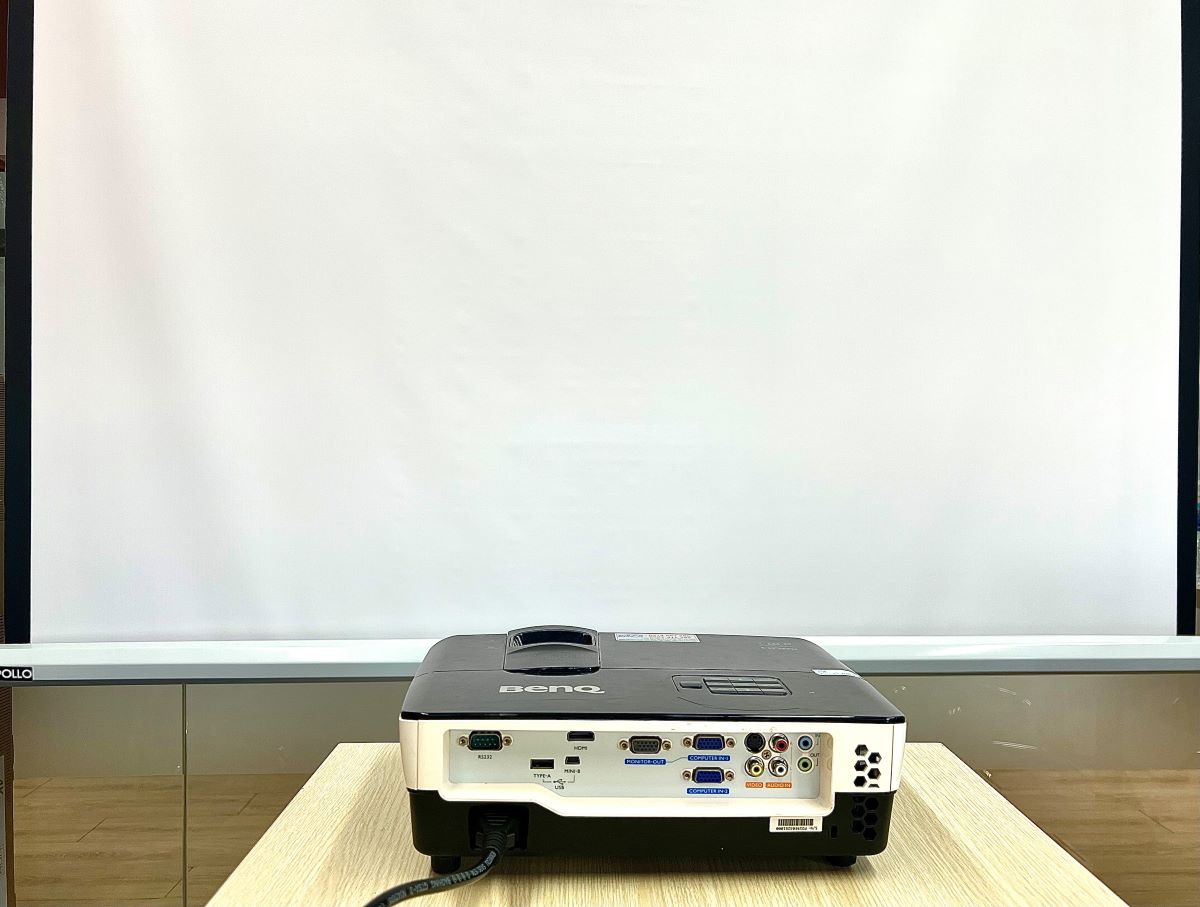

How To Fix
- For a quick fix, flick your wrist sharply while holding the projector screen’s handle to temporarily increase the spring’s tension.
- If the wrist flick doesn’t work, re-tension the spring by unrolling and rerolling the screen, then retightening the spring inside the roller.
In this guide, I’ll lead you through a straightforward process to fix a projector screen that won’t roll up.
We’ll concentrate on re-tensioning the screen, which involves key steps like uninstalling the screen and adjusting the internal spring of the projector screen.
This approach is designed to ensure your projector screen rolls smoothly again, effectively restoring the functionality of the rolling mechanism.
Let’s dive into the details and work towards getting your screen back in perfect working order.
Quick Navigation
How to Add Tension to A Projector Screen?
1. Re-tension the Projector Spring
Step 1: Carefully remove the screws connecting the end caps to the projector screen’s casing. Since the casing is metal, it’s advisable to wear gloves to prevent cuts.
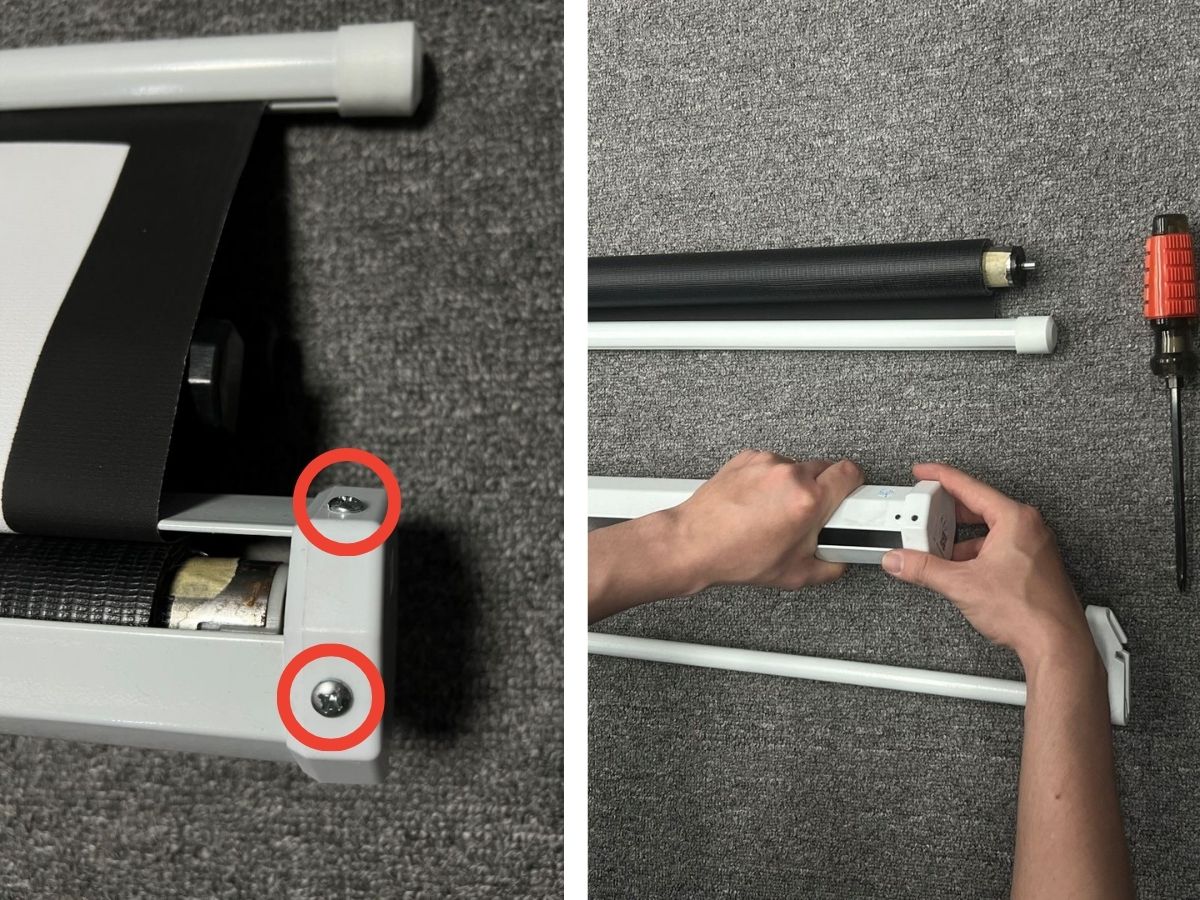
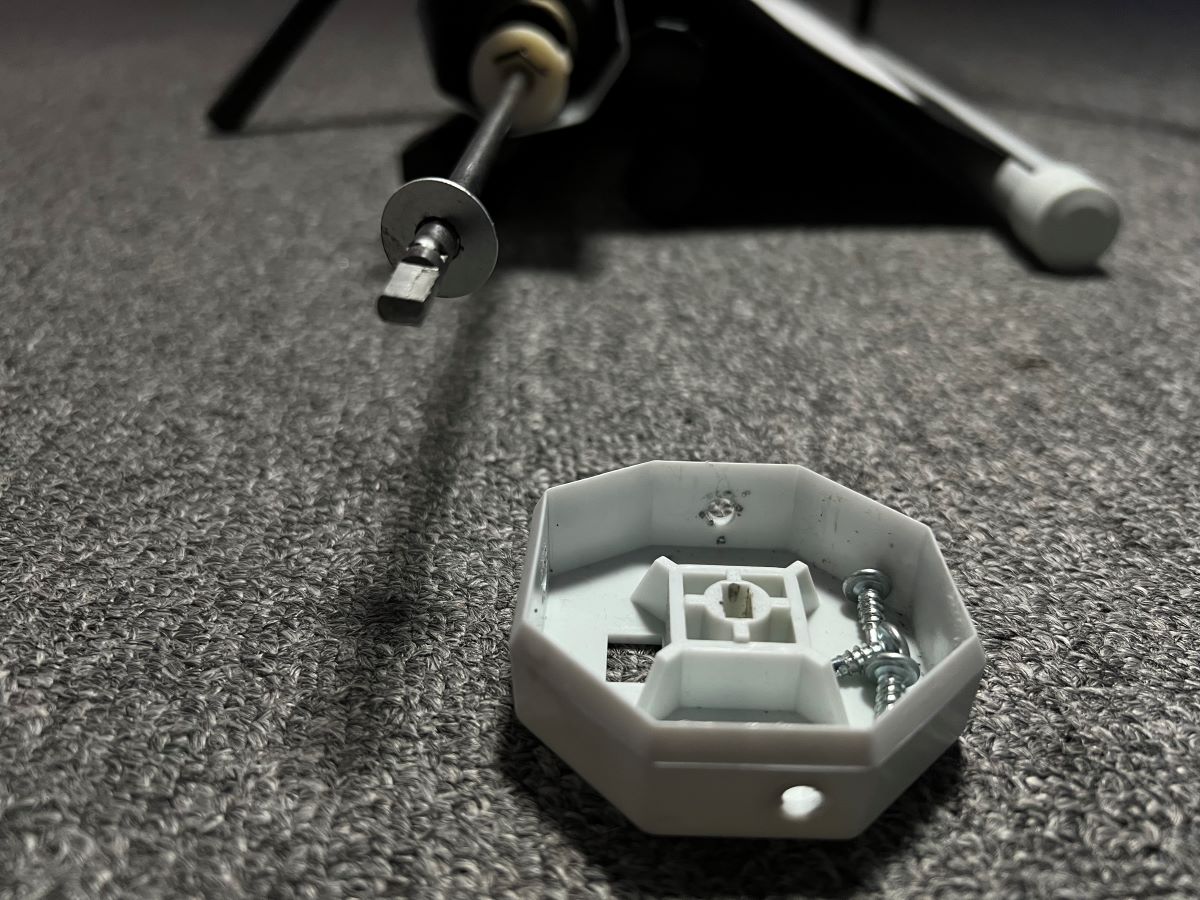
Step 2: Remove the tension string, and exercise caution when releasing the tension to avoid unintentional harm.
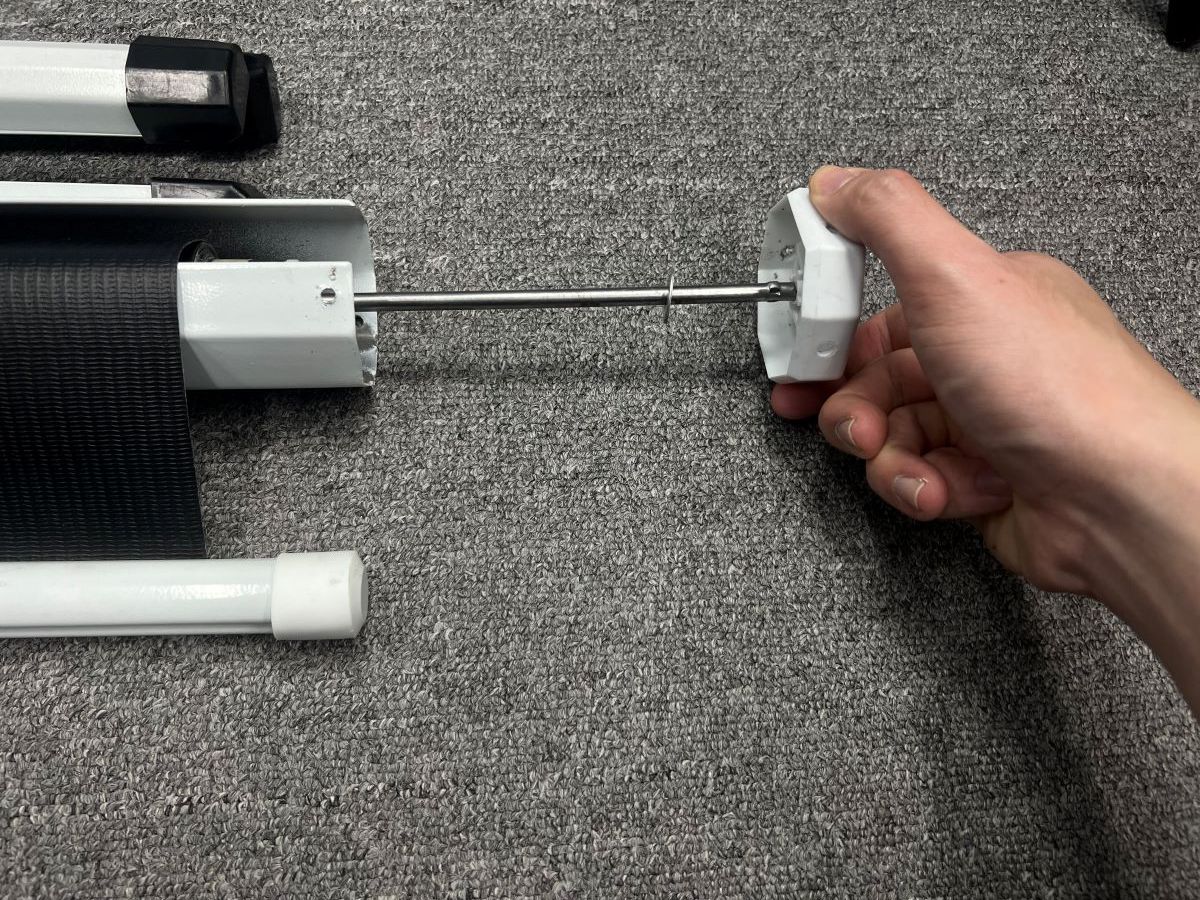
Step 3: If the tension has loosened and moved out of its original position, make sure to securely reposition it.
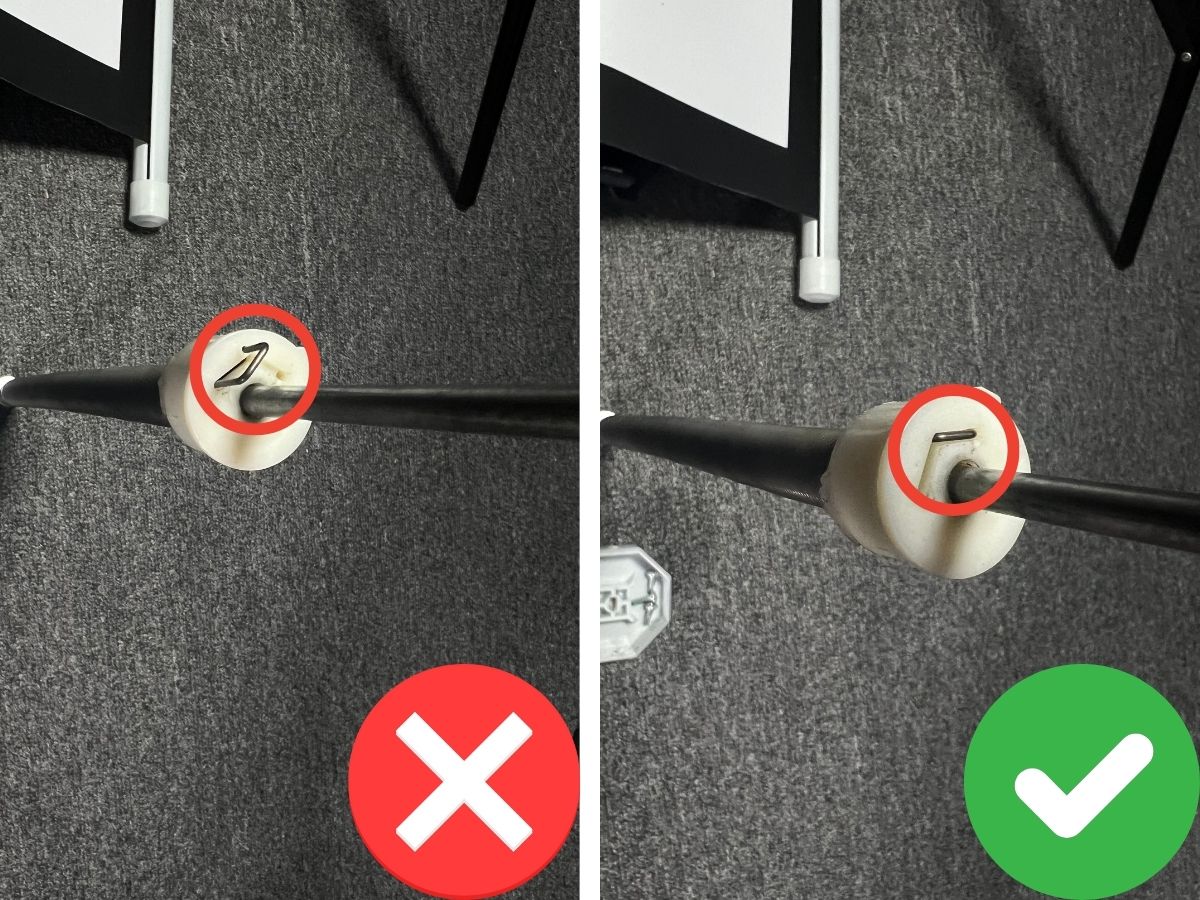
Step 4: Fully unroll the screen and then roll it back up. This step ensures that the screen rolls up evenly and correctly.
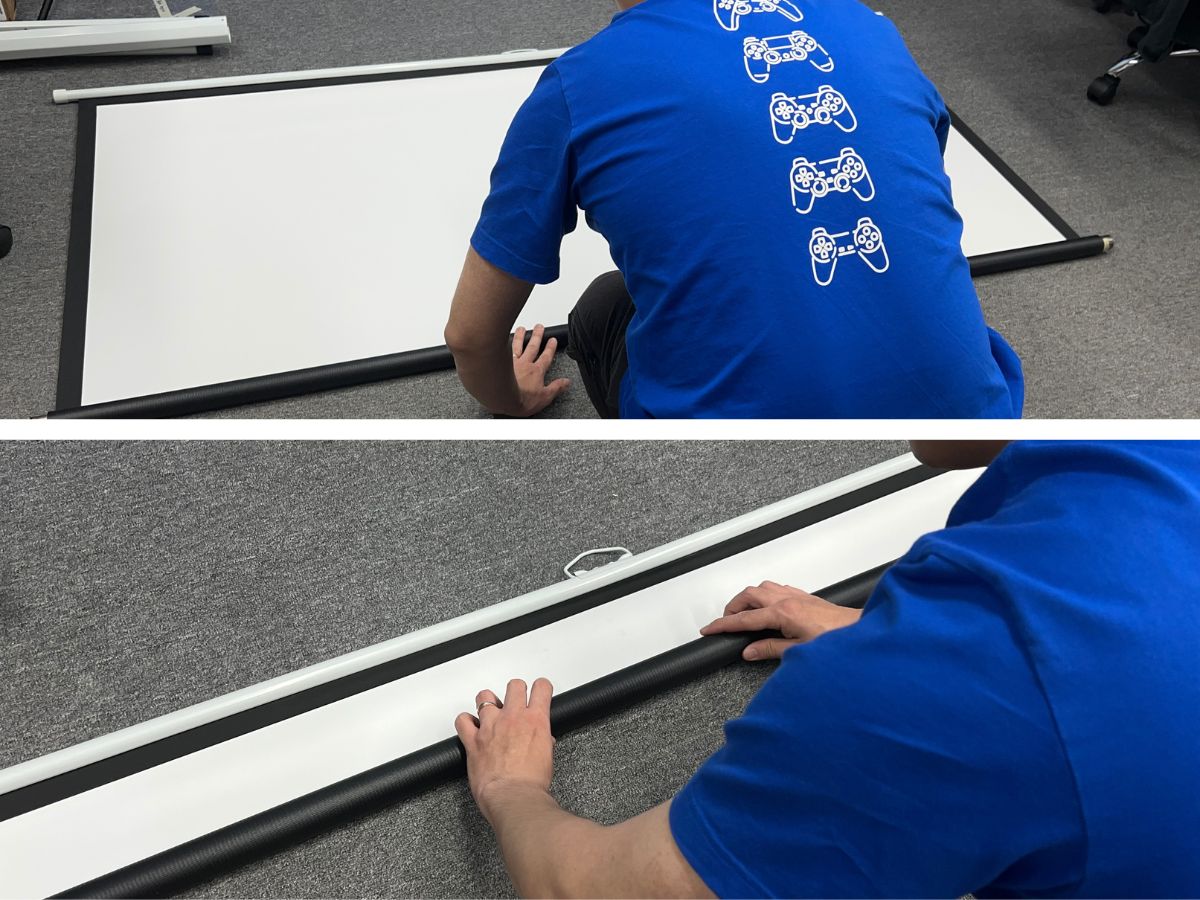
Step 5: Reinsert the projector screen into its casing. Ensure correct orientation to avoid having to reinstall it due to a backward image.
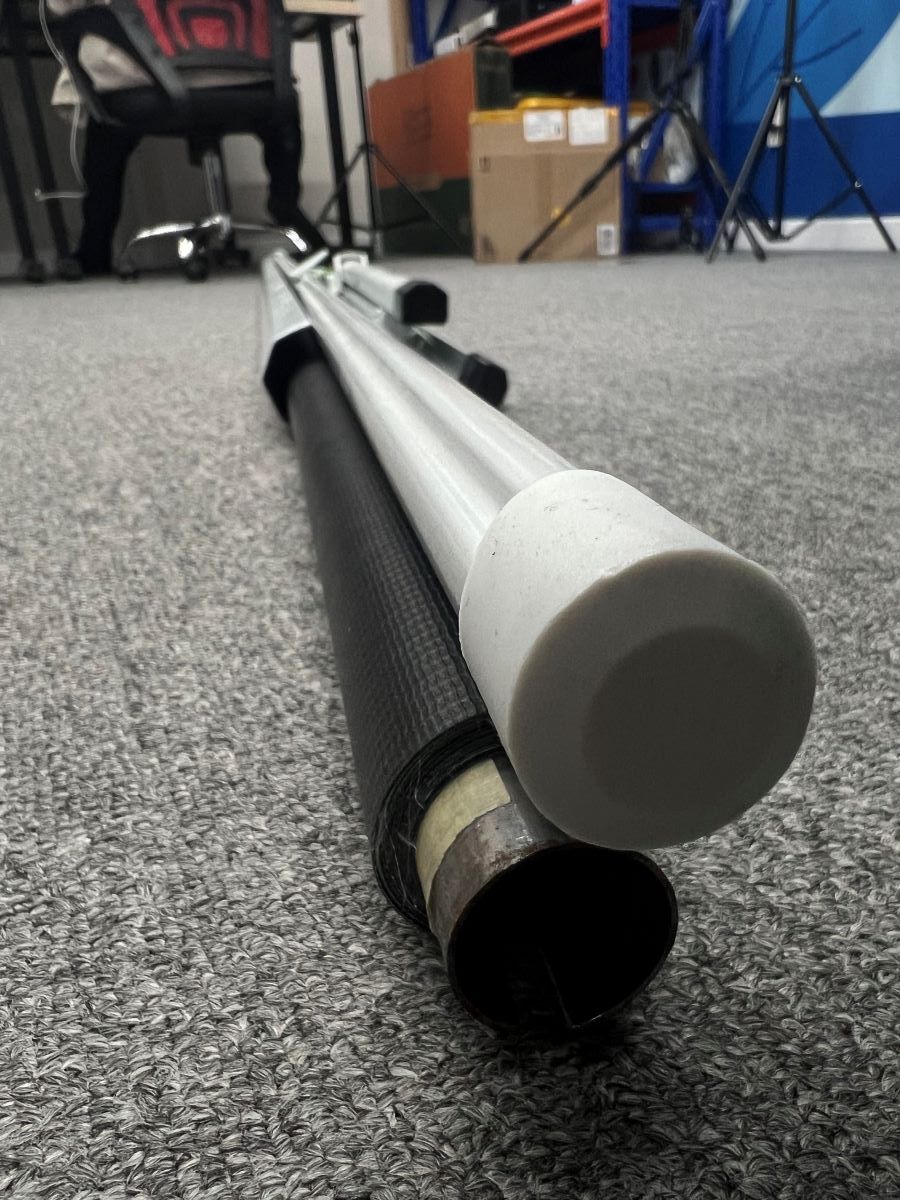
Step 6: Secure the side of the screen without the spring first. Look for the cap with a circle shape in the middle; this is designed for the side without the tension string.

If the cap is difficult to fit into the casing, use one hand to firmly hold the casing and use the other hand to push the cap in.
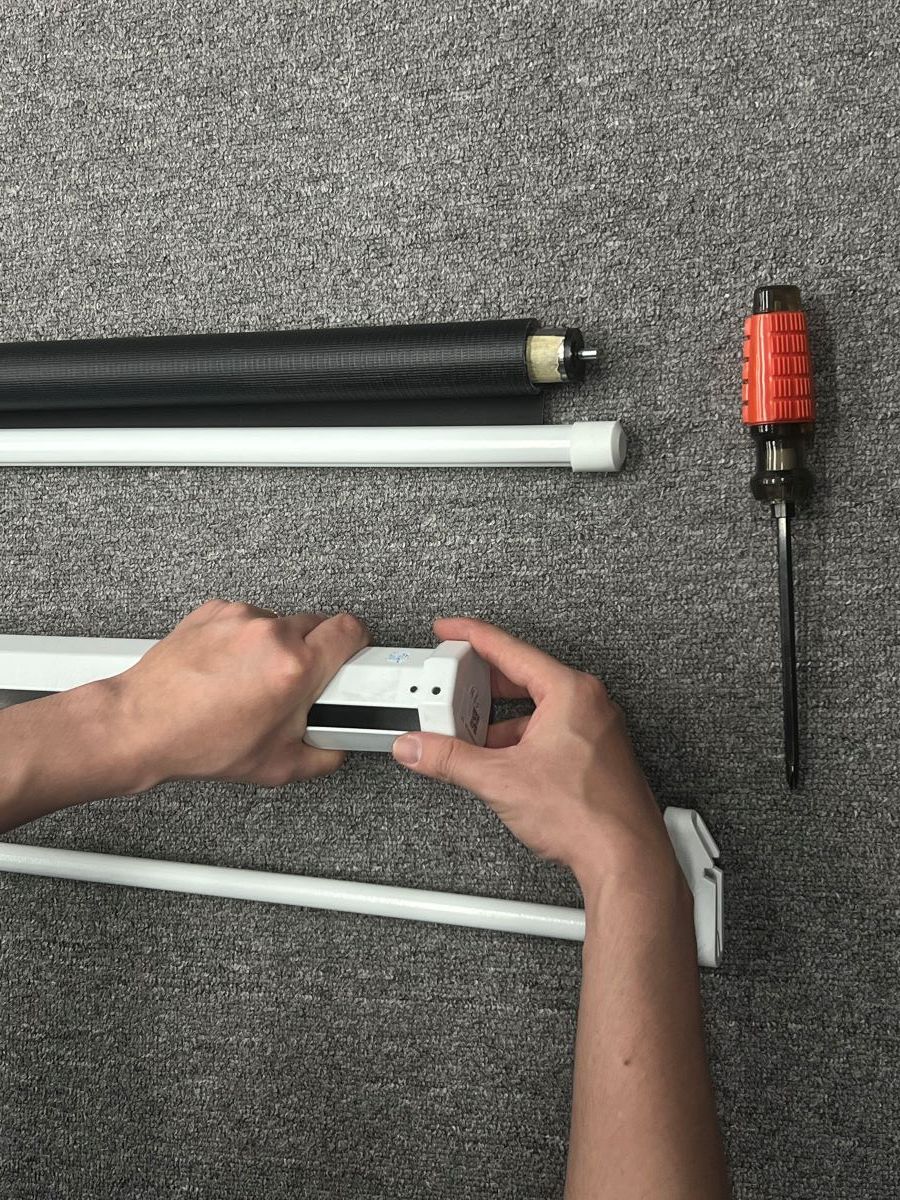
Step 7: Reinsert the tension string into the projector screen tube.
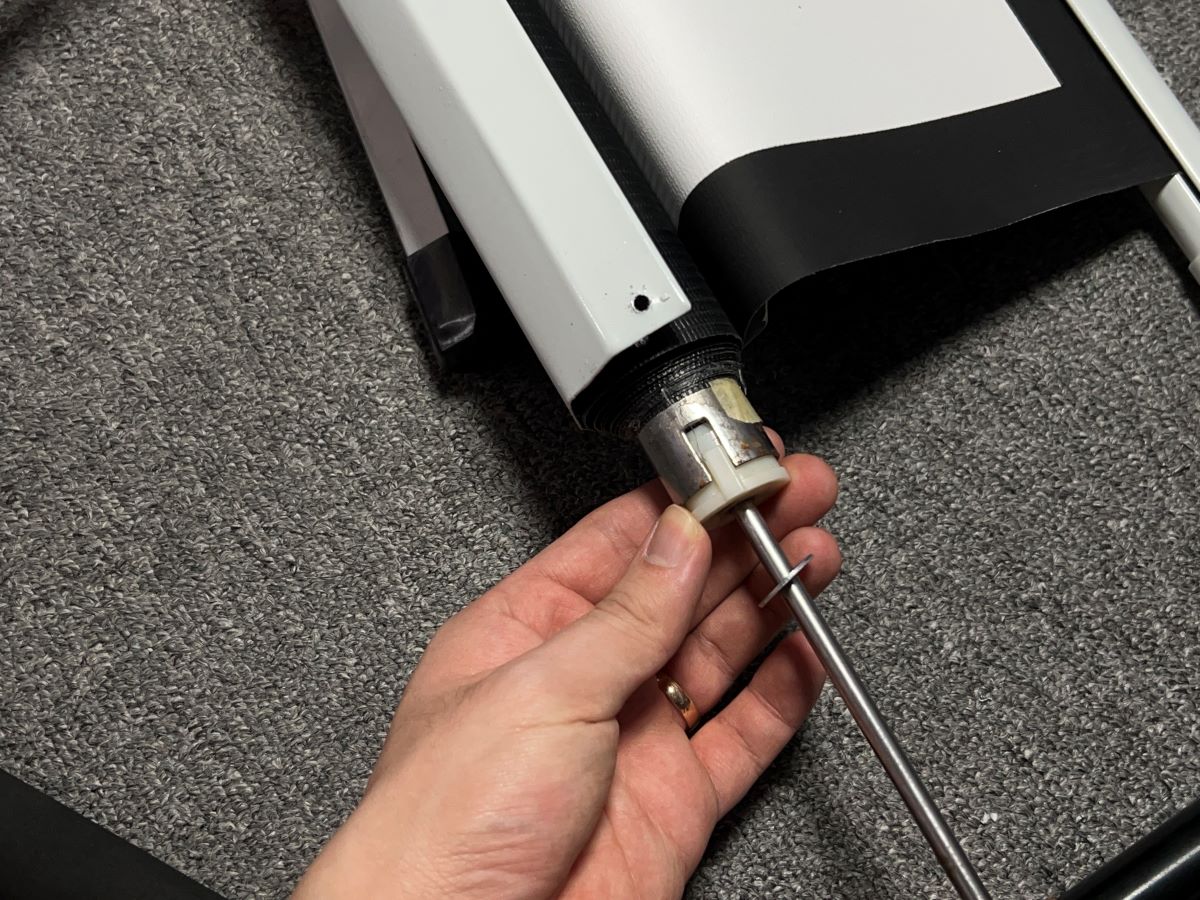
Step 8: On the tension side, carefully reattach the cap and press the tension mechanism back into place.
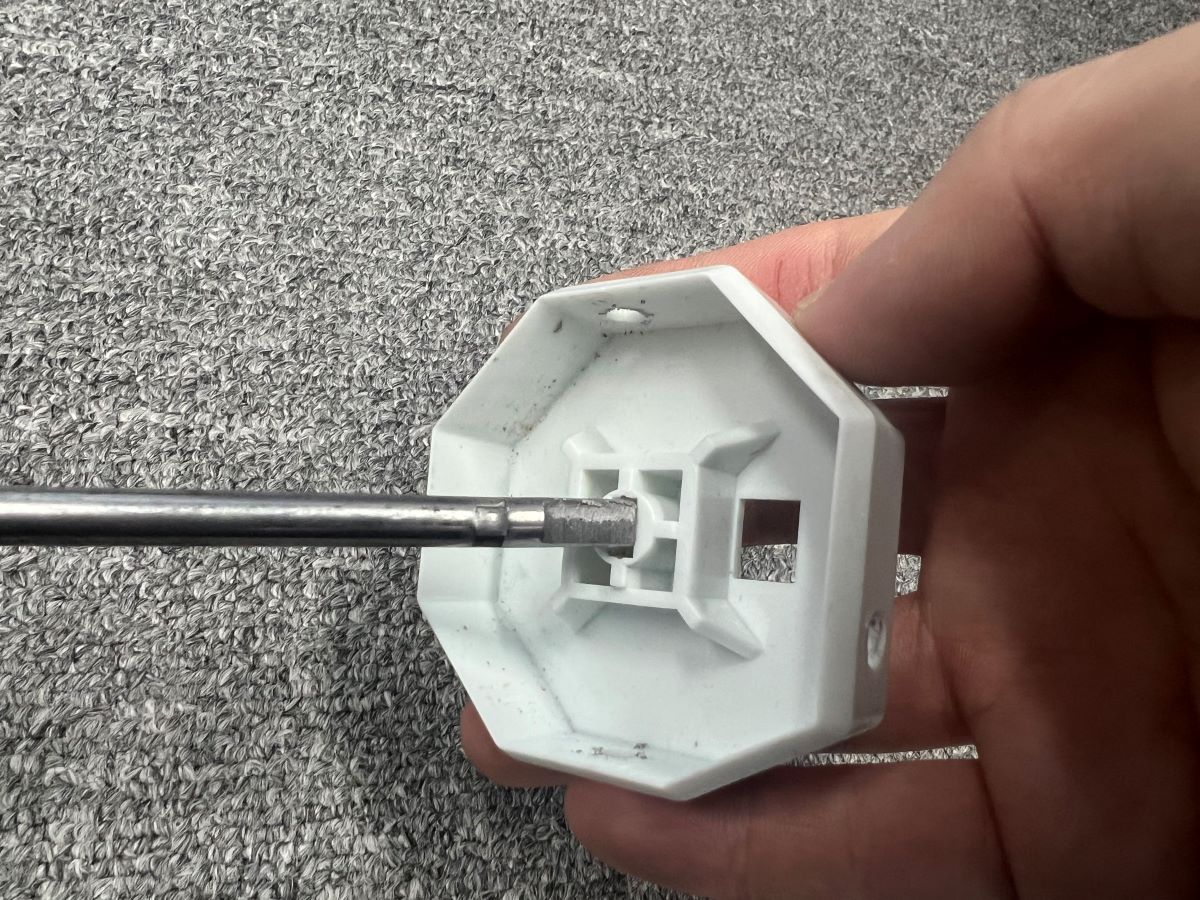
Rotate the tension clockwise to retighten the spring, usually about 4-5 times, though this can vary based on your projector model.
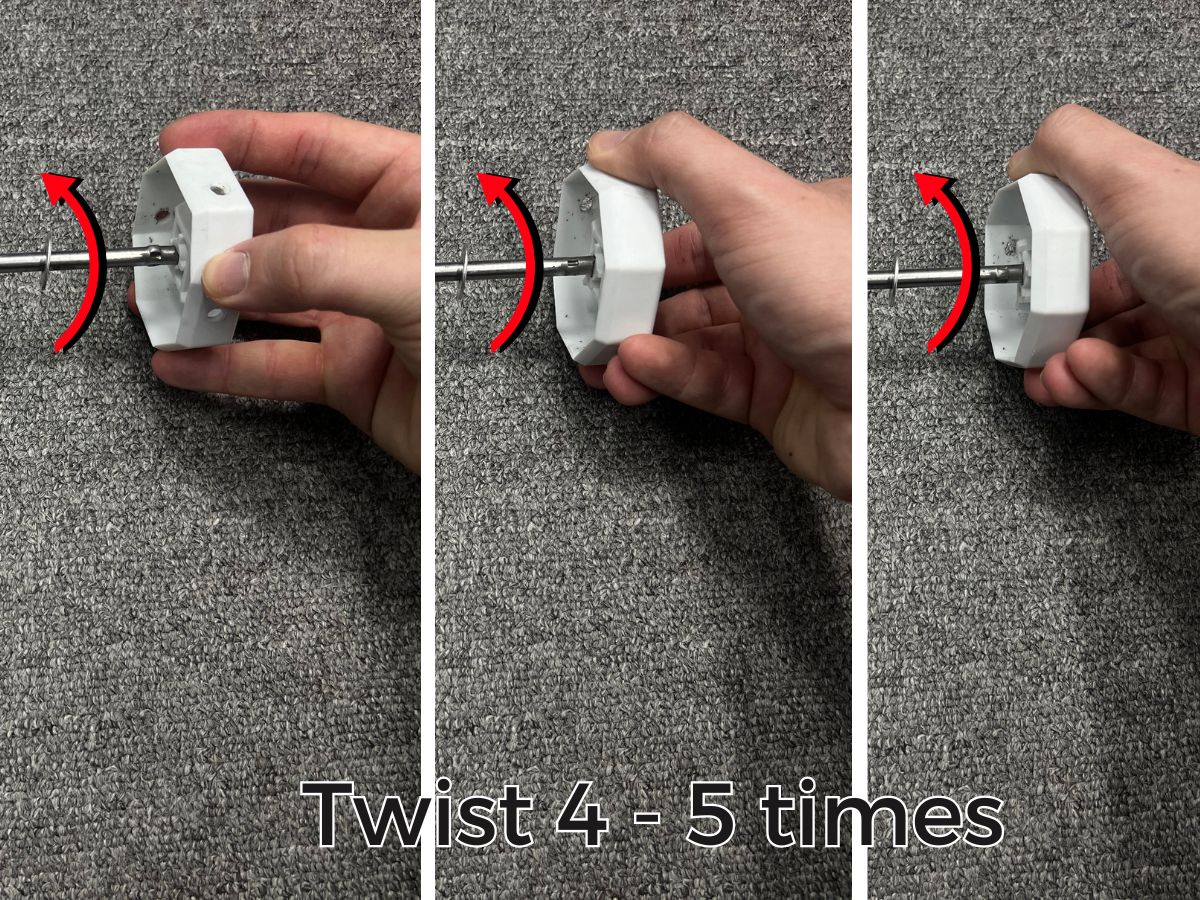
Step 9: Finally, reattach the screws to the cap and test the screen to ensure it’s functioning properly.
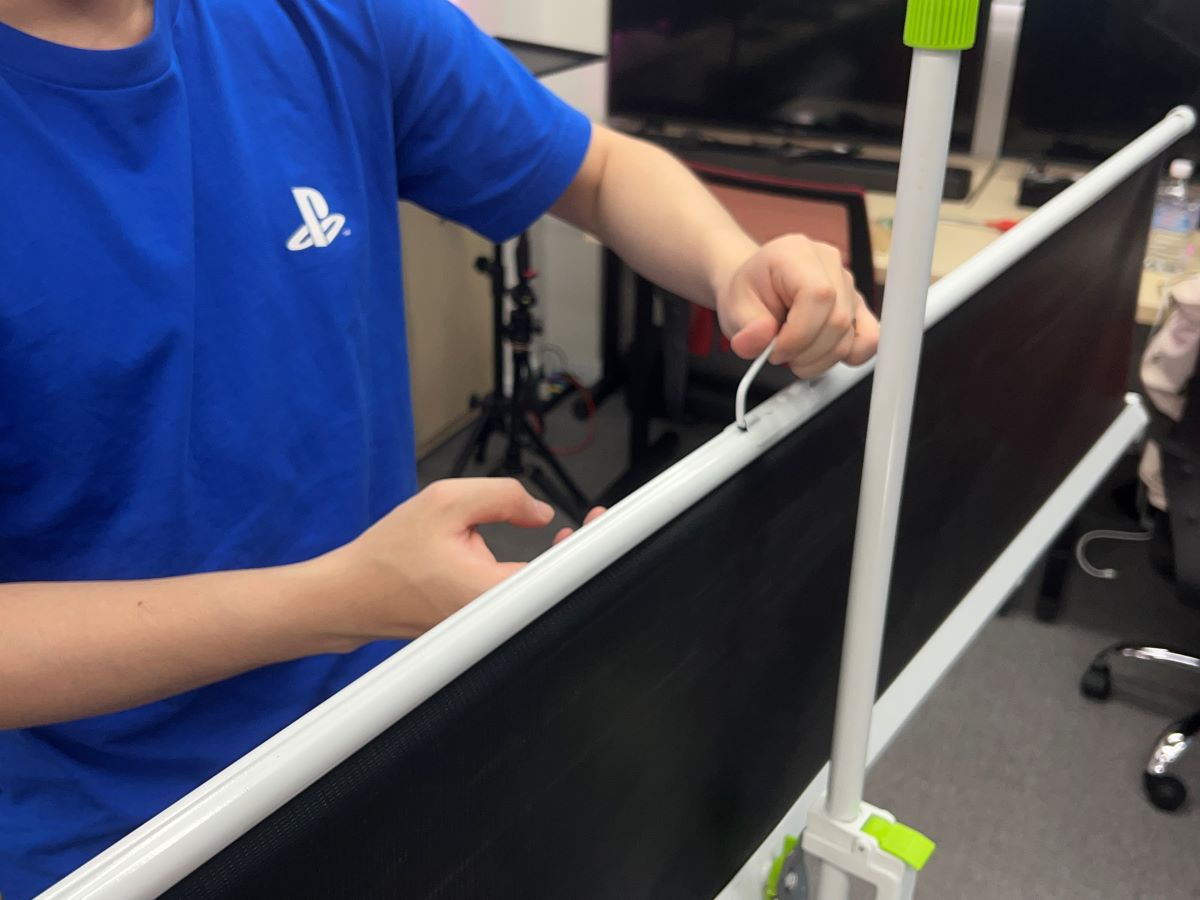
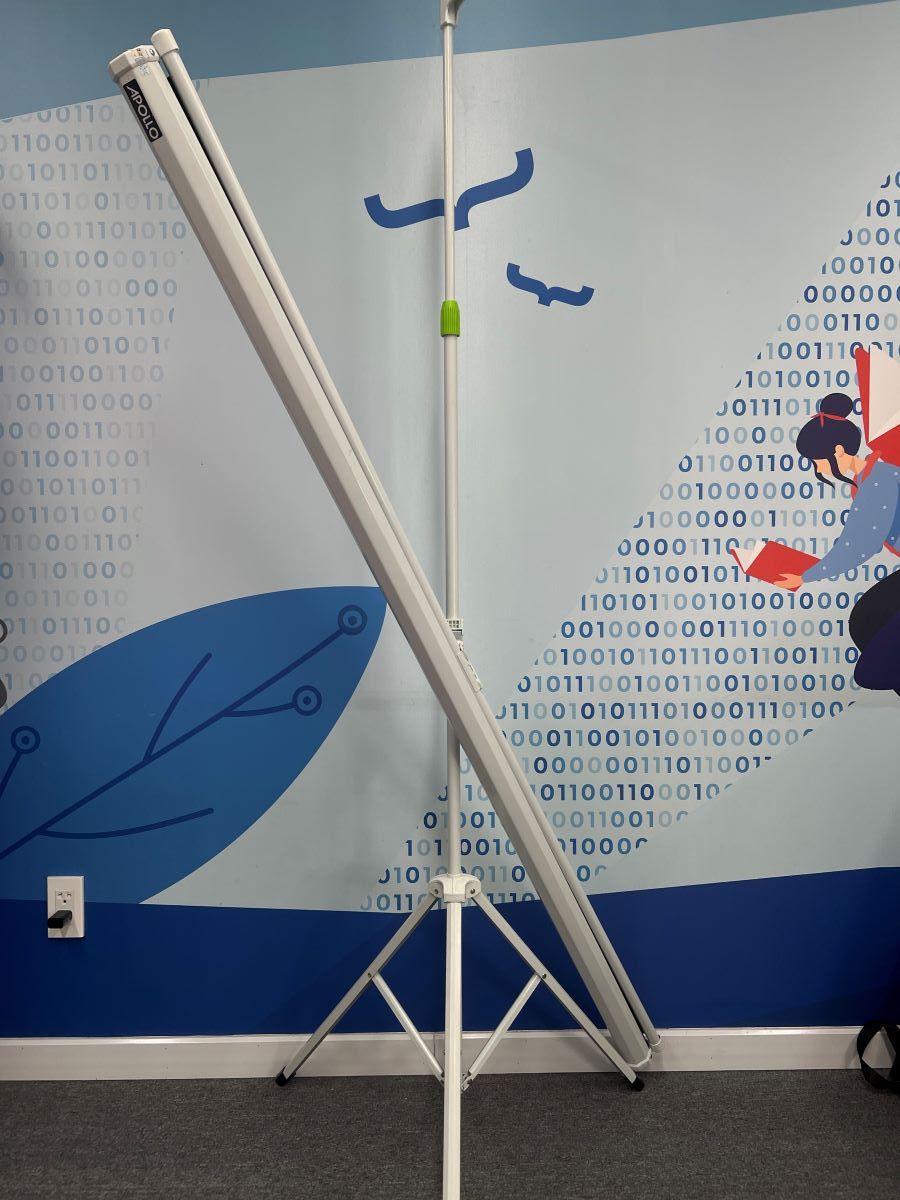
2. The Wrist Flick
This is a very easy trick to get your spring’s tension back up. Know that this only works if you lose tension through using it so much and not by overpulling.
All you need to do is hold the screen by the handle. With a fast motion, flick your wrist down, and use both hands if necessary. For support, hold onto the handle and push upward a bit while the screen rolls back up.
This works because the flick can bring a shock to the spring, which can build up enough tension to pull the screen up. This trick provides tension only for a moment. You’ll have to do it again every time you’re done using your projector screen.
But if that doesn’t work, use the spring re-tensioner method.
What Causes The Spring to Not Work?
When a retractable projector screen fails to roll back up, then the problem is with the spring. To be more specific, the problem is with the spring’s tension.
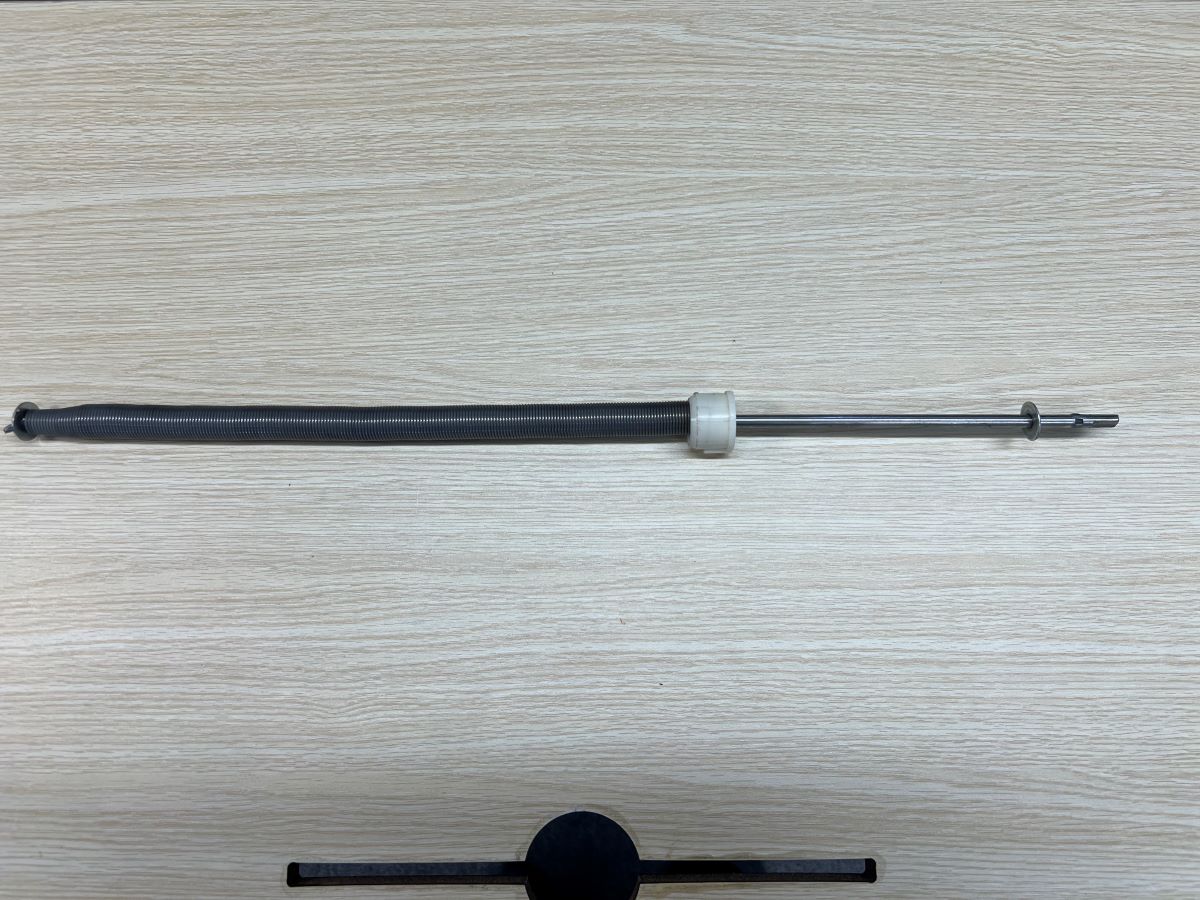
You already know the retractability of screens depends on the spring and its tension. So what happens if the tension becomes loose?
The spring won’t pull on the screen anymore. The result will be that your screen can’t roll back up to the housing. This is why this issue comes up.
How can you prevent this from happening? Unfortunately, you sometimes can’t. What we mean is that there are 2 ways the tension loosens, one is preventable while the other isn’t.
If the spring inside your projector screen isn’t functioning properly, it may have become dislodged.
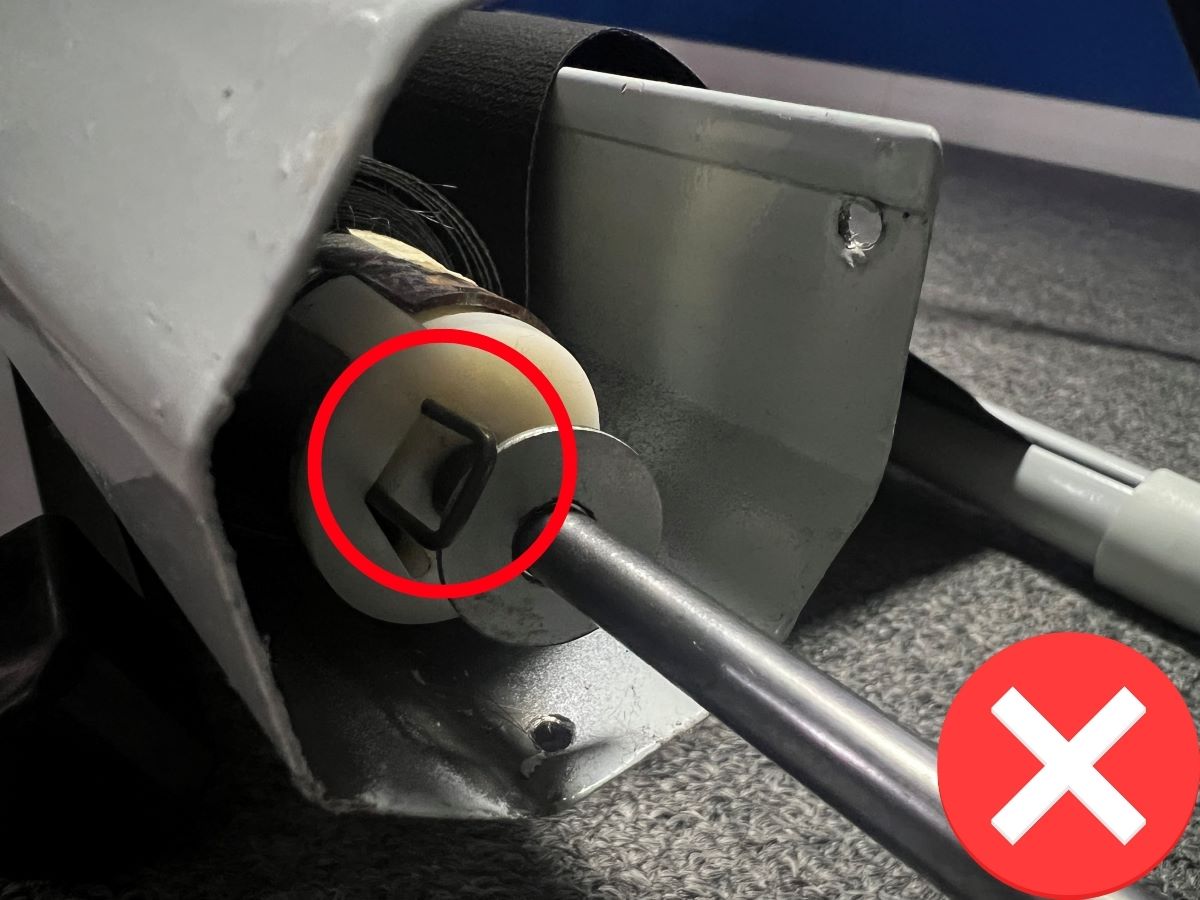
To fix this, you can open up the projector screen and reposition the spring to its correct placement. Then, retightening the spring should resolve the issue of the projector screen not rolling up properly.
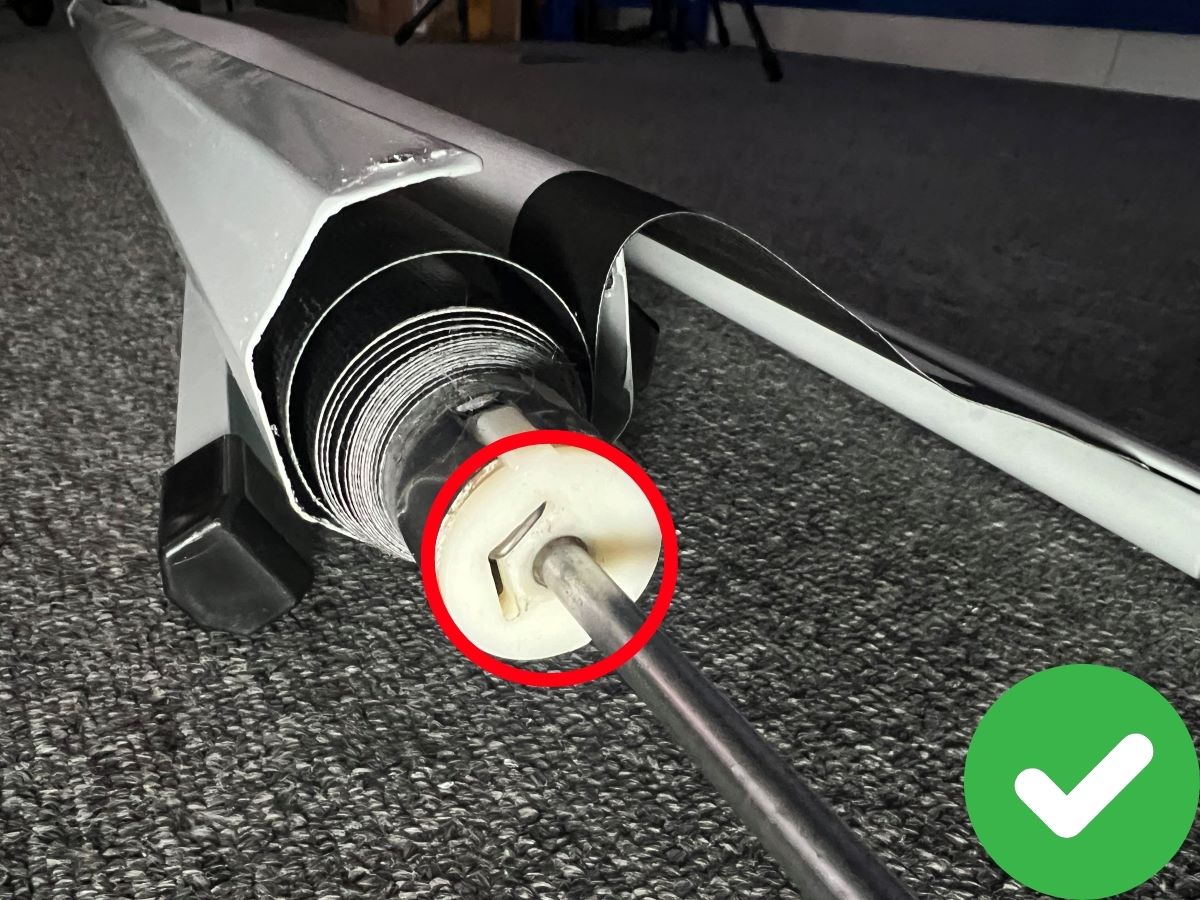
Retractable Projector Screen Mechanism
Let’s delve into the workings of a retractable projector screen. Understanding its basic components and mechanism can be helpful for troubleshooting or maintenance.
Basic Components
Screen Material: This is the primary surface of the projector screen where images are projected. Made of smooth, reflective fabric, it’s engineered to display visuals with clarity.
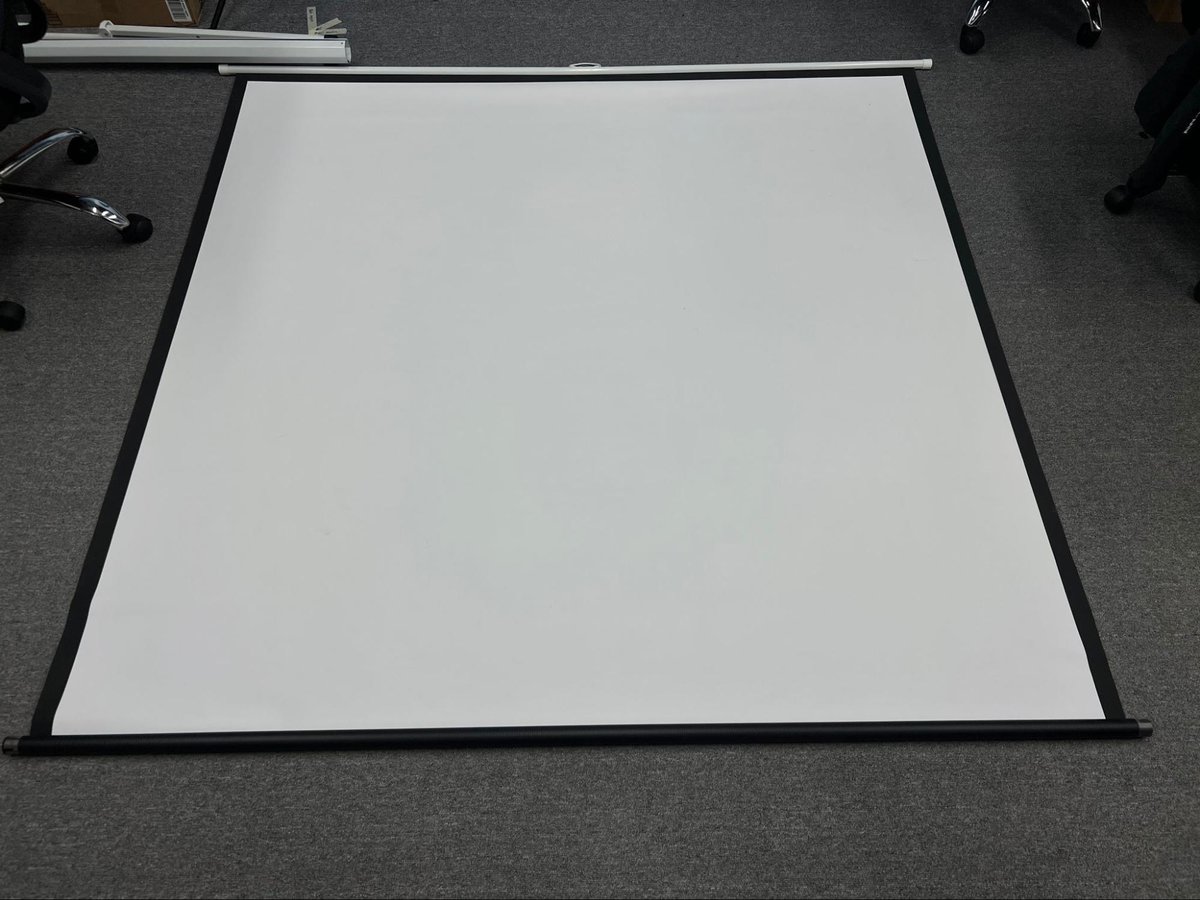
Roller: A key component, the roller is a cylindrical tube around which the screen material winds when retracted. It’s typically spring-loaded to facilitate smooth retraction and extension of the screen.
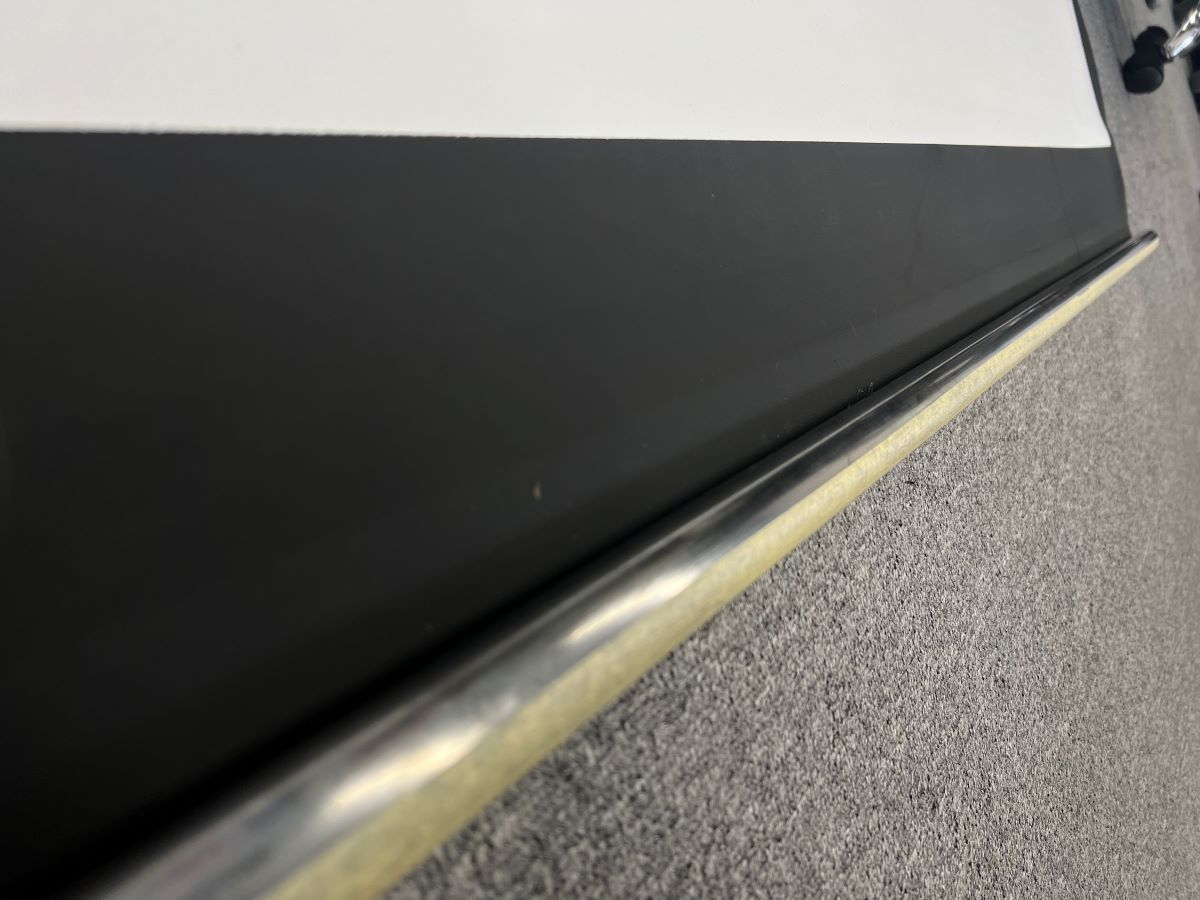
Casing or housing: This protective enclosure houses the roller and the retracted screen. It serves to keep the screen material protected from dust and damage when not in use.
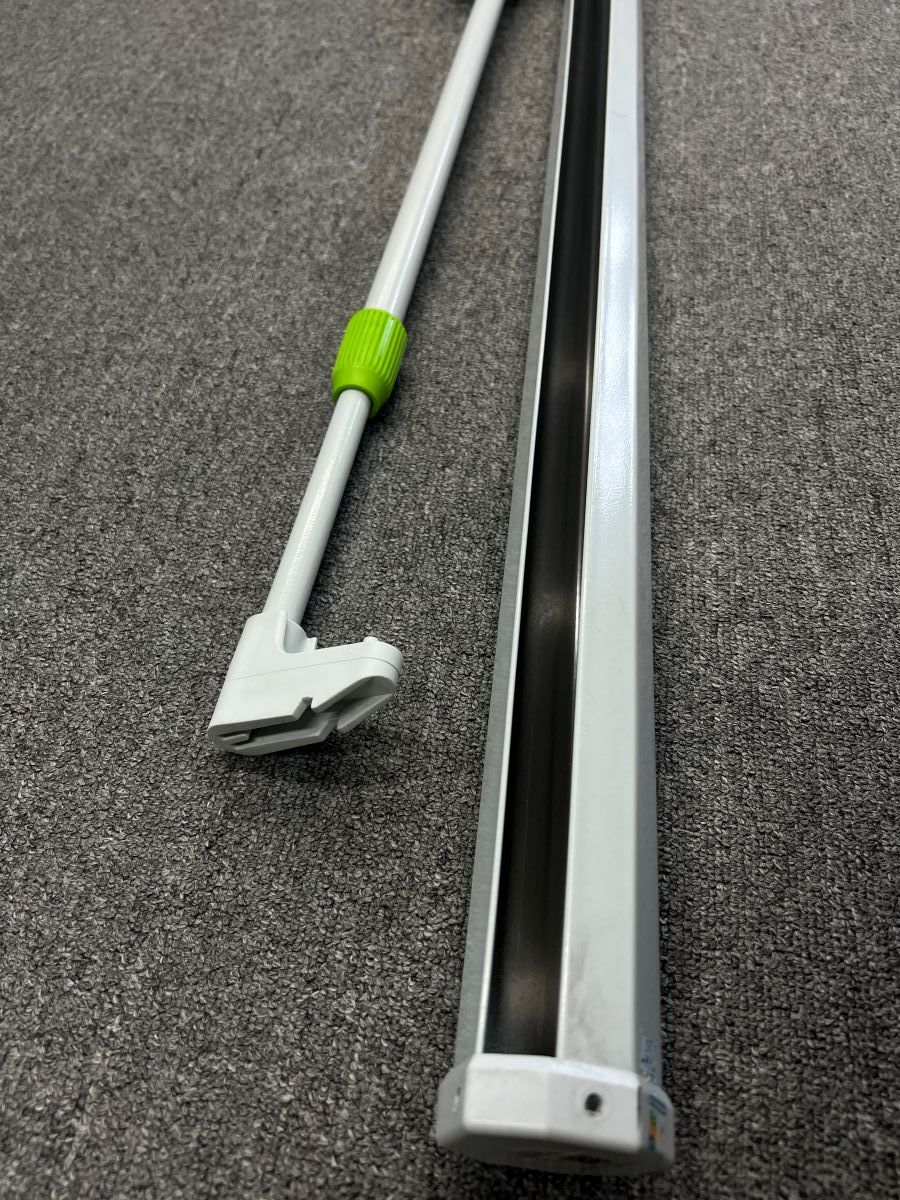
Spring Tension: In manual retractable screens, the spring inside the roller is vital. It’s calibrated to allow for easy lowering and retraction of the screen, maintaining a balance between being neither too loose nor too tight.

How it Works
The operation of a manual retractable projector screen revolves around its spring-loaded mechanism.
Lowering the Screen: When you pull down the screen, you’re tensioning a spring inside the roller. This tension holds the screen in place at your chosen height.
Retracting the Screen: To retract, a slight pull releases the locking mechanism. This allows the spring to unwind, rolling the screen back up around the roller in a smooth motion.
Tai “Ty” Luu, an Electronics Engineering graduate from Sheridan College, is a passionate technical editor with a deep love for technology and gaming. He constantly seeks new challenges to expand his expertise in the tech and gaming fields.

